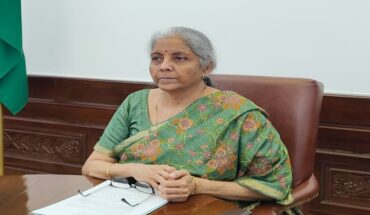
In my previous column “Towards providing decent employment”, I argued that economic growth at lower level of equilibrium in the previous decade has not helped to generate adequate employment opportunities in the country. It would be difficult to meet the target set by the SDG (8) by 2030 without adequate measures taken to kickstart the economy for a double-digit growth figure.
I too highlightedthat rising Labour Force Participation Rate (LFPR) helps add diversity in the labour supplyportfolio and contributes to equity in economic growth. Rising LFPR cannot be a reason behind the rising unemployment as indicated by a few mainstream economists. In this column, I emphasiseon the varying standard of living of the households whose members are working in different categories of employment.
The Periodic Labour Force Survey (PLFS) by NSSO broadly defines the households under four categories in terms of their primary source of income in both rural and urban areas. These are self-employment, regular wage or salary earning, casual labour and others. In the absence of a credible source of information regarding household income, the average household monthly consumption expenditure (MCE) is used as an indicator to explain the standard of living.
A. Self-Employed
According to PLFS Annual Report 2021-22, about 54 percent of households in rural areas and 33 percent of households in urban areas fall under the category of self-employed.In these households, the major source of income does not come from any job or employment outside of the family occupation or enterprise.
Self-employment can be both from agriculture and non-agriculture sector. In rural areas, a major share of self-employment comes from agriculture sector which is about 65 percent. In urban areas, self-employment is mainly focused on the non-agriculture sector.
The average MCE of the rural households whose primary source of income comes from self-employment in the agriculture sector is Rs. 9699 whereas households with primary source of income as self-employed in non-agriculture sector stands at Rs.10076 in 2021-22. The difference in MCE between the two groups is about Rs. 400 which is not significant looking at the large base of dependency of households on agriculture as primary occupation.
In the urban areas, the households with primary source of income from self-employed in the non-agriculture sector have a better standard of living than their rural counterparts. Their average MCEis Rs. 14286 in 2021-22.The urban households do not fall under the category of self-employment in agriculture as this is not a primary source of their total income.

B. Regular Wage/Salaried
About 14 percent of the rural households depend on regular or salaried jobs as their primary source of income whereas in urban areas, this ratio is about 43 percent. The average MCE of the households in the rural areas who depend on regular jobs as their primary source of income is Rs. 11240. However, the urban households that come under this employment category have a better standard of living with an average MCE of Rs.14886. One important point to be noticed here is that in the urban areas, the gap between the MCE of households under the category of self-employed in non-agriculture and the household under the regular job is about Rs. 600.
C. Casual Labor
In rural areas, the households with major source of income from the activity of casual labour is Rs. 7096 which is relatively less than the activities such as self-employment in agriculture, non-agriculture, and regular jobs. These households are impacted by the seasonal nature of agriculture. There is a shift of this labour force from this section to the non-agriculture sector by various government employment programs like MGNREGA. Another section of the rural labour force is casual but non-agriculture. Households that fall under this section have an average MCE of Rs. 7948 which is relatively better than the same under casual agriculture section. But, in the urban areas, the households under the section of casual non-agriculture occupation have a little higher MPCE of Rs. 8999.
D. Others
Households whose primary source of income do not fall under any activities as discussed above are categorized as others. In rural areas, these households constitute about 7.1 percent and in urban areas, this share is 12.6 percent. Members of these households do not have a common source of income and frequently move from one occupation to the other. In the absence of a constant source of income, some of them resort to begging and other non-labour activities. These households have a sub-standard of living with an average MCE of Rs. 5570 in rural and Rs. 9439 in urban. However, it should not be misconstrued that the urban households with begging activities have a better standard of living than the households under the category of casual non-labour activities.
The above analysis used household MCE as an indicator of standard of living. It is true that information about household consumption expenditure from the PLFS is not a proper representation of the standard of living but, it helps provide an approximate estimation about the differences in standard of living along the line of employment across sectors.
It is evident from the analysis that the regular or salaried job provides a relatively better standard of living than the self-employment in both agriculture and non-agriculture sector in rural areas though the difference in average MCEis not significantly large. In urban areas, this difference is just Rs. 600. If decency of job can be defined as a job which provides a better standard of living, salaried jobs are not the only options. Self- employment in agriculture and non-agriculture sectors which include value and dignity along with the standard of living are no less than the salaried jobs.
Therefore, the public policy must focus on two necessary elements to meet the target of SDG-8 by 2030. First, adequate efforts need to be made to recognize the casual labour force and bring them to the mainstream job market through training and skilling. Second, it is necessary to create an environment to acknowledge the importance of the self-employed labour force and provide necessary encouragement and support for their growth.
Dr. Sridhar Kundu , Bharti Institute of Public Policy, Indian School of Business, Mohali






